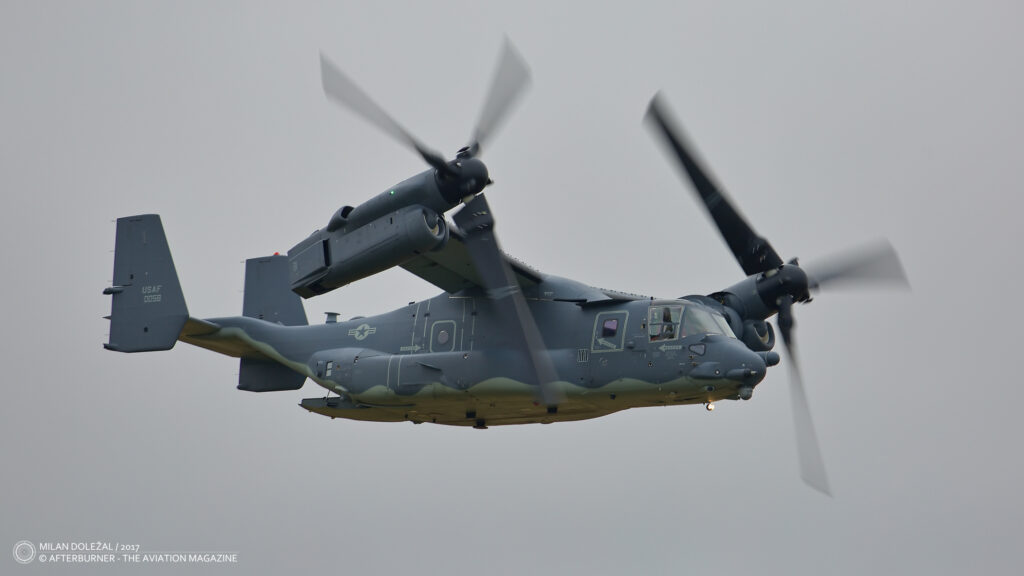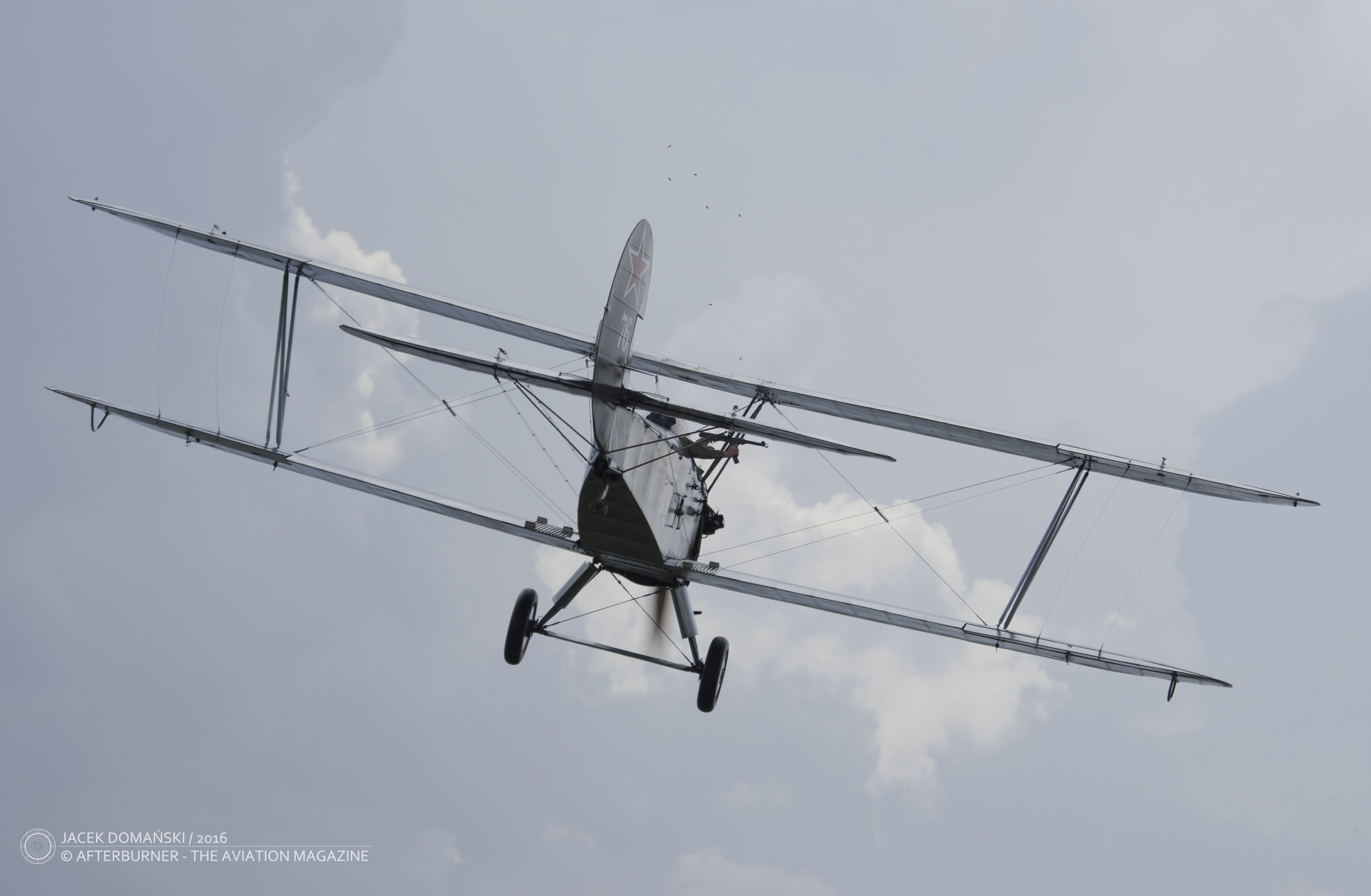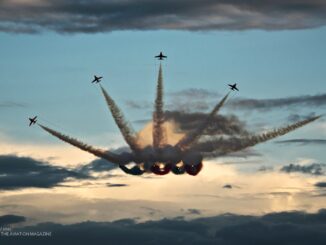 Bell-Boeing CV-22B Osprey (c/n D1037, 11-0058 US Air Force, 352nd Special Operations Group), flying display at Royal International Air Tattoo, Fairford, July 2017.
Bell-Boeing CV-22B Osprey (c/n D1037, 11-0058 US Air Force, 352nd Special Operations Group), flying display at Royal International Air Tattoo, Fairford, July 2017.
Without any doubts, the V-22 Osprey is one of the most interesting aircraft currently being operated by military aviation. So far, it is also the sole tiltrotor that entered the serial production, although the idea of convertible rotor aeroplane is almost as old as the aviation itself.
Yet in the early 1900s, Swiss aviation pioneers Henri and Armand Dufaux came with the first project of a tiltrotor aeroplane. The ´Convertible´, as the Dufaux brothers named their aircraft, was patented in 1904 and disclosed to general public one year later.
Then, the development was continued by several aviation designers but none of them was able to make the tiltrotor airborne. Perhaps, closest to perform its maiden flight was a VTOL aeroplane developed in the Third Reich by Heinrich Focke and Gerd Achgelis. The Focke-Achgelis Fa 269, as that aircraft was designated, already passed the stage of wind tunnel tests and a full-scale mockup was made. Focke´s estimation was that the Fa 269 would be ready to fly in 1947 but end of the Third Reich had finished any further works on that project.
The idea of the tiltrotor aircraft became reality only in 1954, fifty years since the initial patent of the Dufaux brothers. That milestone was achieved with maiden flight of Transcendental Model 1-G, an experimental American design, development of which was launched in the late 1940s by Mario Guerrieri and Bob Lichten, then continued by William E. Cobey Jr.
Over the years, development of the tiltrotor aircraft was continued by Bell, Canadair and Westland. Although most of prototypes developed by the aforementioned companies successfully completed the initial test flights, none of them entered production. At that time, the tiltrotor aeroplane was still treated as an interesting idea but without any practical objective in mind, thus lacking sufficient financing from the government or the armed forces.
Real change came only in 1980, with the failure of Operation Eagle Claw (also known as Operation Tabas). During the Iran Hostage Crisis, a complicated plan was put into action in attempt to rescue US embassy staff, held captive in Teheran. Operational team of the US Delta Force used eight RH-53D Sea Stallion helicopters, supported by EC-130E and MC-130E Combat Talon aeroplanes.
Regrettably, the operation failed. Eight US troops were killed, one helicopter and one transport aircraft destroyed and five more RH-53D abandoned in the middle of the Iranian desert. What´s more, the abandoned helicopters were then taken over by the Iranian armed forces and restored to operational status. The Operation Eagle Claw clearly indicated that there may be missions that cannot be successfully competed neither by helicopters nor transport aircraft and was a trigger to launch the Joint-service Vertical take-off/landing Experimental (JVX) programme.
The JVX initiative started in 1981, initially led by the US Department of Defence and the US Army. In 1983 the US Navy and Marine Corps joined the programme and eventually the JVX combined the requirements of the Air Force, Army, Navy and Marines.
And if you want to know more about further development of the US tiltrotor aircraft, continuation of the V-22 story can be found in our article issued in October 2019, at the opportunity of 500,000 flight hour of the Osprey fleet.



